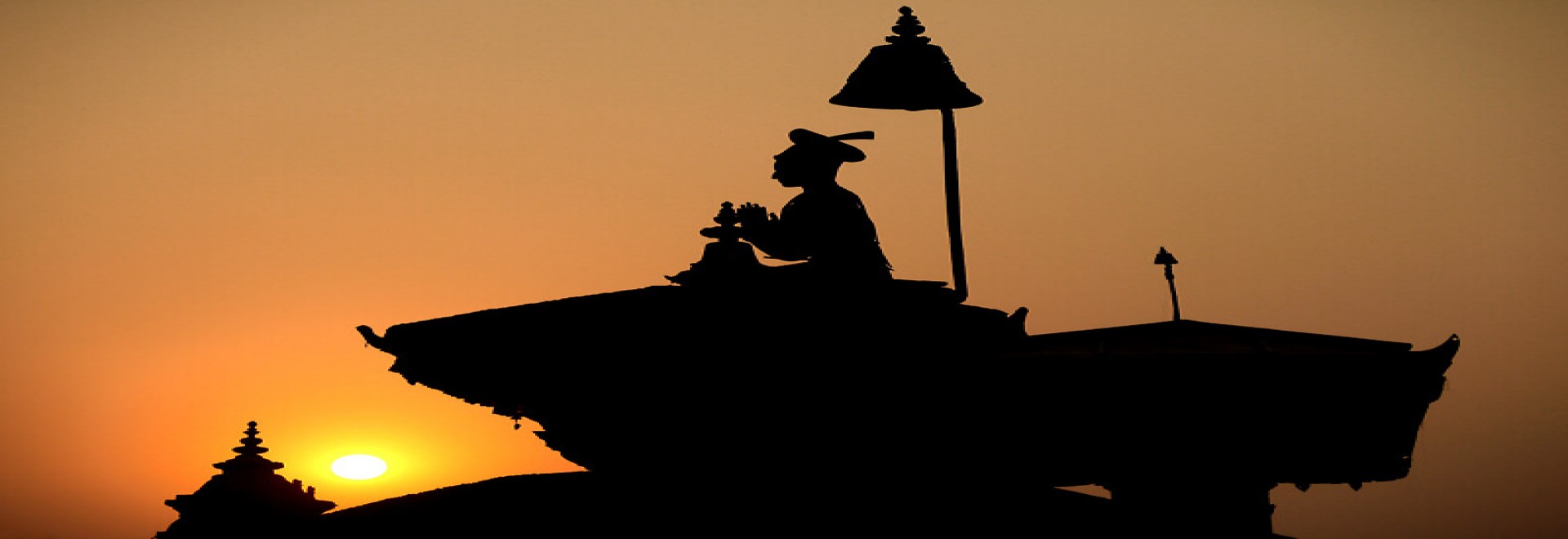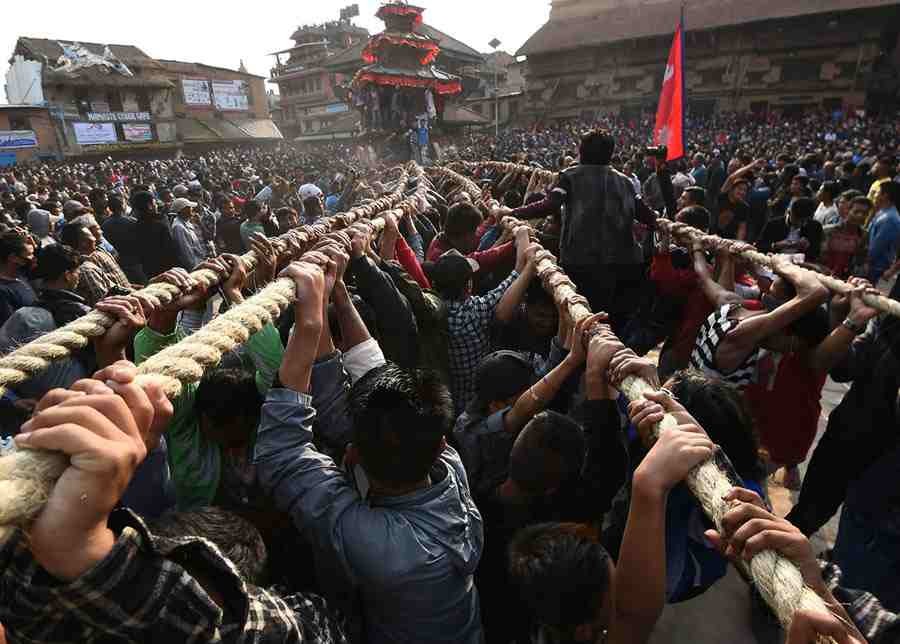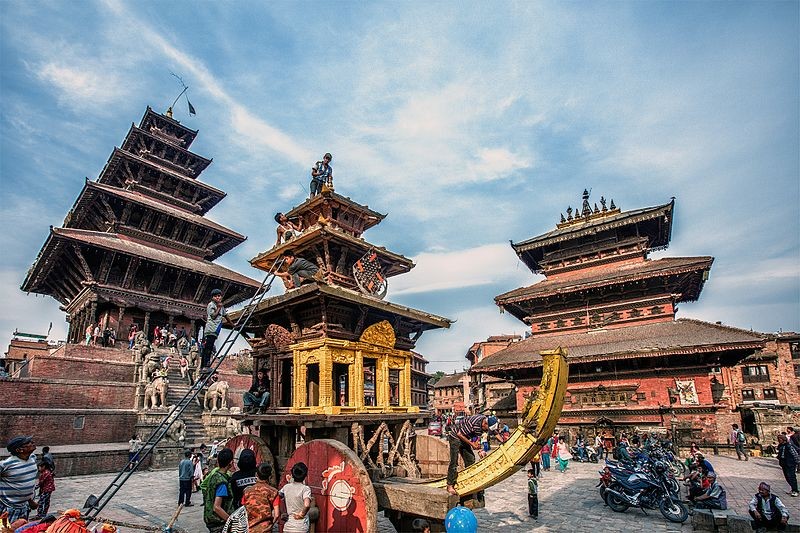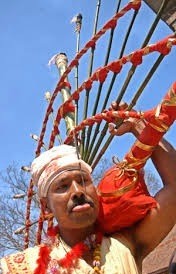
Bisket Jatra in Bhaktapur Nepal

Bisket Jatra in Bhaktapur Nepal
Swotah TravelCredit: Jina Thuya
9546
16, 04 2018
Bisket Jatra is a huge festival of the Newari people and is particularly celebrated in the most ancient city, Bhaktapur. The city is known as the city of devotees and temples and famous for its indigenous community, culture, tradition, festivals, rituals, practices, and cuisines. People tend to celebrate numerous festivals and Jatras annually with the same spirit and enthusiasm. But the thing about Bisket Jatra is different from all other festivals, and that’s the reason why it has been able to allure the crowd and capture the heart of many. Therefore, whenever people conceptualize Jatras, their minds stucks on one tag, Biska Jatra. Biska Jatra is one of the most popular and longest Jatra of Nepal, especially celebrated in Bhaktapur, Dhapasi, Thimi, and Tokha.
Photo: Chariot(Rath)
Biska Jatra, popularly known as Bisket Jatra, is the biggest outdoor celebration in Bhaktapur city. Many people perceive this event as Bisket Jatra, whereas, Newars refer it as Biska Jatra. It also has another typical name, “Bisya Jatra” where “Bi” refers to a giant snake and “sya” means to kill. Therefore, it denotes it is the celebration of killing a giant snake. It is celebrated at the start of the Nepali New Year; however, it is not connected with it. This celebration is celebrated for nine days and eight nights, which signifies it as one of the largest Jatra in Nepal. The most eventful point of this festival is Bhaktapur Durbar Square, Taumadi Square, and Balkumari Thimi.
The main attractions of the Jatra are the wooden poles, yoh si dyo or lingos, three-story pagoda-style chariot (raths) of Bhairavnath and Bhadrakali, tug-of-war between the thane and kone communities and a tongue - piercing ceremony of bode in which one of the local people ramble around different parts of the city holding a round bamboo rack with flaring lights with a pierced tongue. On the same day, children, including adult children, offer sweets, fruits, and gifts to their mother to show respect and give hat tip.
 Locals Photo: hauling the Chariot
Locals Photo: hauling the Chariot
These nine days and eight nights long festival start with the locals hauling the chariots (raths) of Bhairavnath and Bhadrakali in Taumadi square and they are glorified on the respective chariots called the Bhaila kha and Nakinju kha. The festival begins four days before the Nepalese New Year, which is about 57 years onwards from A.D. and is celebrated until the next four days after New Year. On the last day of the year, the wooden poles are raised over two different places in Bhaktapur. One of them is brought down the day after, and another one on the last day of the festival. During the whole festival, different groups and communities perform different types of dance masking devotees and playing traditional musical instruments like dhema ,dha, flute and so on.
The festival dates back to the Licchavi era when King Jagat Jyoti Malla ruled over Bhaktapur, where you can still find the best art and craft dating to the medieval age. Coming to the myths about this Jatra, it is said that a beautiful princess always became a widow after a day of her marriage as several men who married her were found dead the next day because of snakebites. However, a prince with tantric power came over and tied the knot with her. On their wedding night, he stayed awake and came to know the reason behind the mysterious deaths. Two snakes appeared in the thread-like structures through the nostrils of the princess and attacked the prince, upon which he killed the snake with his sword. When people saw him alive the next morning, they celebrated the day as Biska Jatra. It is believed that this Jatra has been celebrated since the 12 century.
Photo: Tongue Piercing culture- Bisket Jatra
Bisket Jatra is the most standout vivid Jatra of Nepal and can be said as one of the most dangerous events in the world. Therefore, whenever you seek to attend this event, you must adopt a few measures, such as taking a guide along and always participating in groups. Moreover, you should not approach raths and wooden poles, and if you intend to participate in the tug-of-war, you will be suggested not to, as it is a deadly thing to do.
You may also like: Festivals in Nepal
NEWSLETTER SIGNUP
Sign up to receive our trip ideas and travel offers!
Get updates and Exclusive Offers up to 20% Discount










